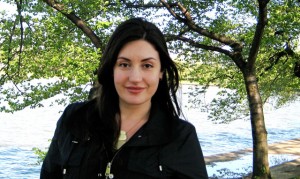Victoria Smolkin-Rothrock on the History of the Russian New Year’s Tree

A hundred years ago, Christmas in Russia looked a lot like Christmas in America, with trees, presents and twinkling lights. All that changed with the Russian revolution, Assistant Professor of History Victoria Smolkin-Rothrock told NPR in an interview about the history of the Yolka, or New Year’s tree.
“The tree comes to be seen as a symbol of both the bourgeois order, which is one kind of class enemy, and of religion in particular, which is another kind of class enemy,” explains Smolkin-Rothrock. “There are very explicit statements that essentially unmask the Christmas tree for the class symbol that it is. It becomes clear that one does not have Christmas trees without political sympathies and allegiances falling into question,” a dangerous thing in the Soviet era.
In 1935, though, there was a letter in Pravda, the official paper, saying things had changed.
Smolkin-Rothrock sums up the argument of one high-ranking Bolshevik: “Here we are, and Socialism has been built, and why would we deprive those children who had never had a Christmas tree of their own of the pleasure of the tree?”
So, the tree was redeemed. And it moved up the Orthodox calendar, becoming completely secular. Today, New Year’s trees can be found in the homes of many Russian Jews.
Smolkin-Rothrock is also assistant professor of Russian, Eastern European and Eurasian studies.

